“The Long Road to Freedom: The Florida Black Heritage Trail” is an eye-opening exhibit that continues through March 18 at the Matheson History Museum.
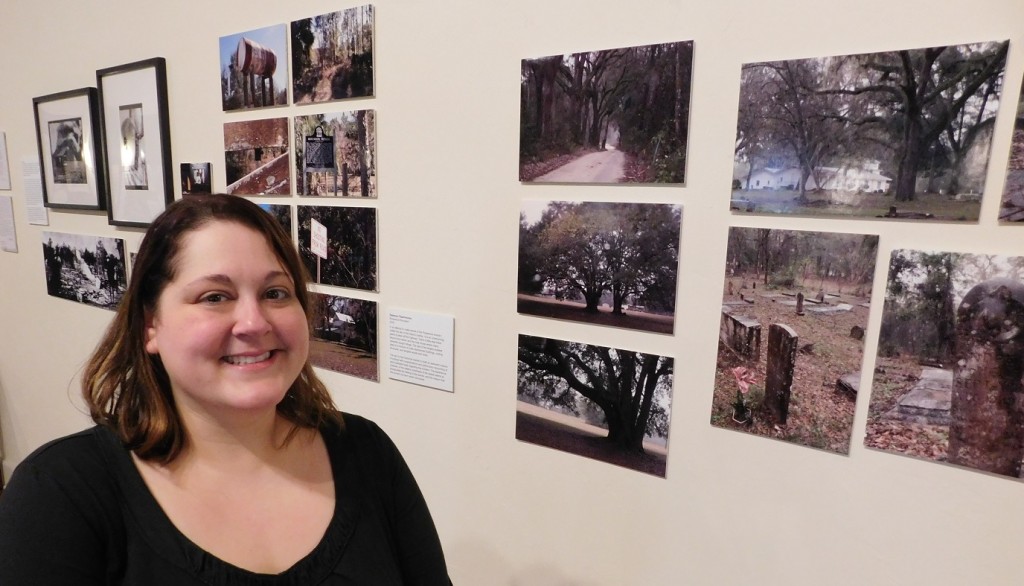
In August 1916, in the dog days of summer, a lynch mob hunted down six African-Americans in Newberry, accused them of harboring a hog thief and then executed them in cold blood, either by hanging or shooting.
Seven years later, in a small Levy County community, a so-called race riot resulted in the deaths of six African Americans and two white men in what historians refer to as the Rosewood massacre.
A century later, the two North Central Florida atrocities are highlighted in a Black History Month exhibit at the Matheson History Museum in downtown Gainesville. The exhibit is titled “The Long Road to Freedom: The Florida Black Heritage Trail” and continues through March 18 at the museum at 513 E. University Ave.
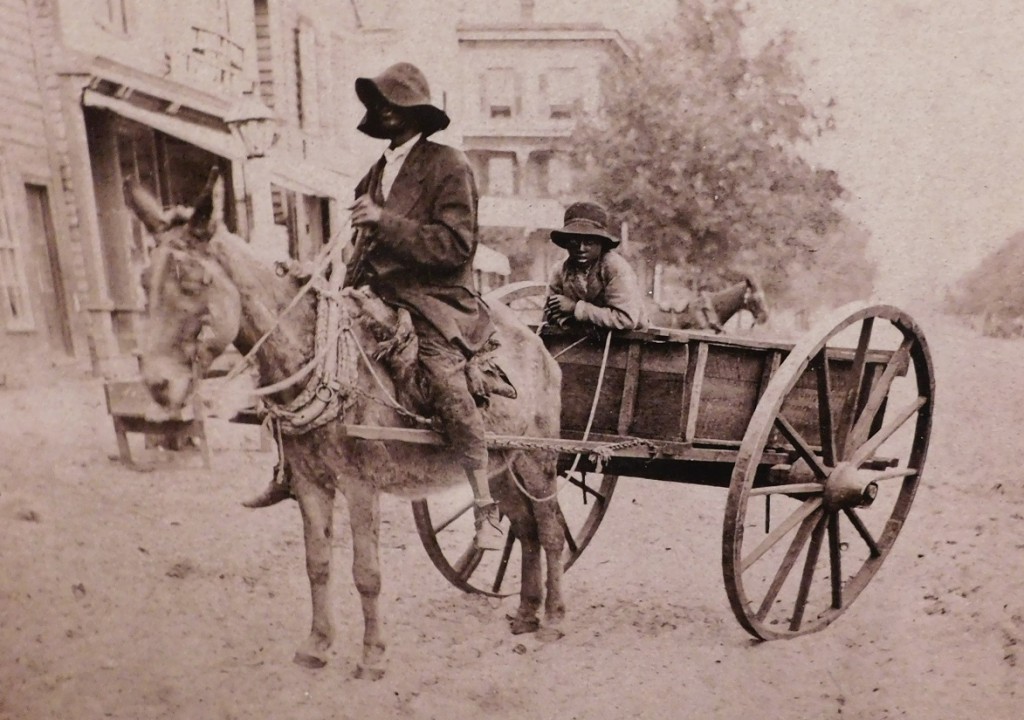
The exhibit explores the hidden histories of sites on the Florida Black Heritage Trail in and around Alachua County, including Gainesville’s old Union Academy and Lincoln High School. Historic photographs from the Matheson’s collection show African-Americans going about their business in downtown Gainesville in the post-Civil War era. Others show protests during desegregation.
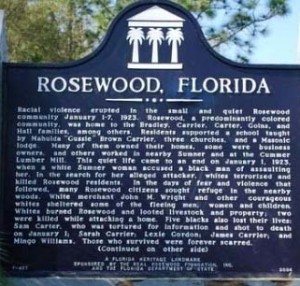
Although the Rosewood incident has been well documented and immortalized by a 1997 movie starring Don Cheadle and Ving Rhames, the Newberry Six is another matter.
“These kind of events often get eradicated from public memory and documentation,” said Rebecca Fitzsimmons, curator and archivist of the Matheson History Museum. “In this case, no one was brought to justice.”
Fitzsimmons pointed to an issue of The Ocala Evening Star newspaper dated Aug. 19, 1916. The front-page headline reads: “All the Country Up in Arms.” The Associated Press article details the “lynching of Negroes in Alachua County in the vicinity of Newberry” and quotes a coroner’s report in the second paragraph.
“The lynching got national coverage, but the legal documents are lacking,” Fitzsimmons said. “They are either buried somewhere or were never filed. There were similar incidents of this nature all over Florida.”
You feel a weight of history, of bearing witness, when you go and experience these sites.
— Rebecca Fitzsimmons, curator
Earlier this month, Fitzsimmons and Matheson Museum executive director Peggy Macdonald drove to Newberry and located the area where the lynching likely took place, not far from the Booker T. Hunt Funeral Home and Hammock Oaks Apartments off County Road 235.
Fitzsimmons took photographs of an ancient oak tree in what is now known as the Hammocks, or Lynch Hammock. She also photographed gravestones in the historically black cemetery behind Pleasant Plain United Methodist Church in Jonesville, where at least three Newberry Six victims were buried. (One of the victims was a pregnant woman, so there were actually seven victims.)
“You feel a weight of history, of bearing witness, when you go and experience these sites,” said Fitzsimmons, whose photographs are part of the Matheson exhibit.
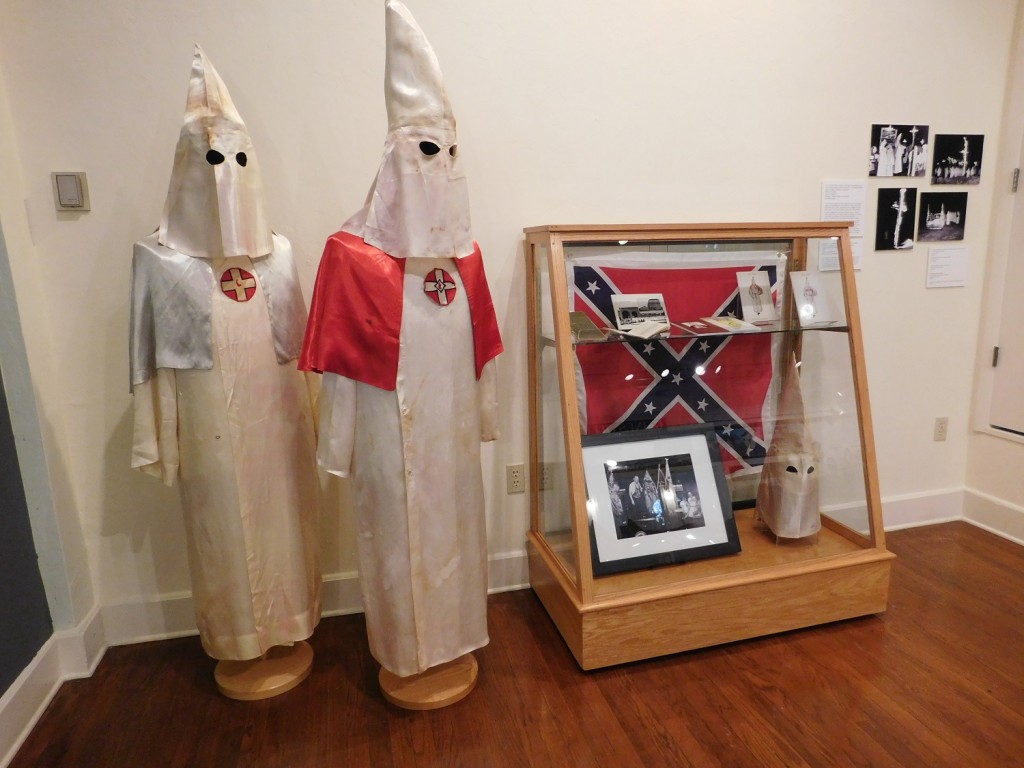
Macdonald realizes that some people will consider parts of the exhibit controversial. For example, one corner is devoted to the Ku Klux Klan and includes two examples of their robes, hoods and capes, as well as a display of the Confederate flag.
“You’re talking about a dark past that not everybody wants to talk about,” Macdonald said.
One display area tells the story of Harry T. Moore, a black educator and NAACP official who spoke out against segregation and also promoted voter registration. He was credited with registering 116,000 black voters.
And because he championed equal rights, Moore made enemies. He and his wife died after a bomb exploded beneath their Brevard County home on Christmas Day 1951. Their murders were never solved.
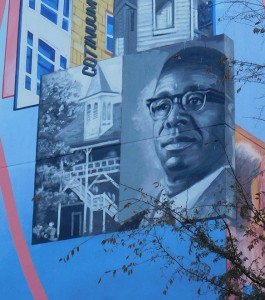
Another exhibit examines the legacy of A. Quinn Jones, the principal of Gainesville’s Union Academy and then, in 1923, the first principal of all-black Lincoln High School.
“He was incredibly important within the African American community,” Fitzsimmons said.
Fitzsimmons started at the Matheson History Museum last Sept. 1. She has been working on the “The Long Road to Freedom” exhibit for more than two months.
“It gave me a chance to really examine the broader cultural issues associated with specific sites and the way Floridians impacted the broader American history that was occurring at the time,” she said.
Macdonald said the Matheson Museum welcomes Fitzsimmons and her talent and dedication.
“We’re so fortunate to have a resident photographer at the Matheson,” Macdonald said of Fitzsimmons, who has an MFA in Art Photography from the University of Illinois. “She also has an MLIS [Master of Library and Information Science], so she’s amazing in the research aspect, too.”
In addition to the featured exhibit, the Matheson Museum will host a series of special events associated with its black history exhibit.
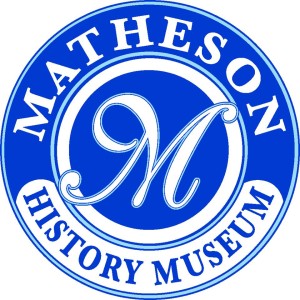 On Thursday at 6 p.m., journalist and author Gary Moore will speak about his new book, Rosewood: the Full Story. Dr. David Colburn, director of the Bob Graham Center, will discuss the 1993 Rosewood investigation.
On Thursday at 6 p.m., journalist and author Gary Moore will speak about his new book, Rosewood: the Full Story. Dr. David Colburn, director of the Bob Graham Center, will discuss the 1993 Rosewood investigation.
On Sunday, Feb. 21, the museum will be open from 1-5 p.m. and include an immersive tour of the exhibit by Fitzsimmons at 2:30 p.m.
On Feb. 27, the Matheson Museum will be stationed at the historic Rail Depot in Depot Park, where winners of the Cade Museum’s Cotton to the Cade poster contest will be on display.
On March 10, Dr. Patricia Hilliard-Nunn, who teaches African-American studies at UF, will give a talk titled: “The Newberry Six: 100 Years Later.”
— Noel Leroux
Matheson History Museum
513 E. University Ave.
Gainesville, FL 32601
Phone: 352.378.2280
Gallery hours: Monday through Friday, 9:30 a.m.-4:30 p.m.
For further info, visit the Matheson Museum website.
Keep up with the Matheson Museum on Facebook.

Your Comments